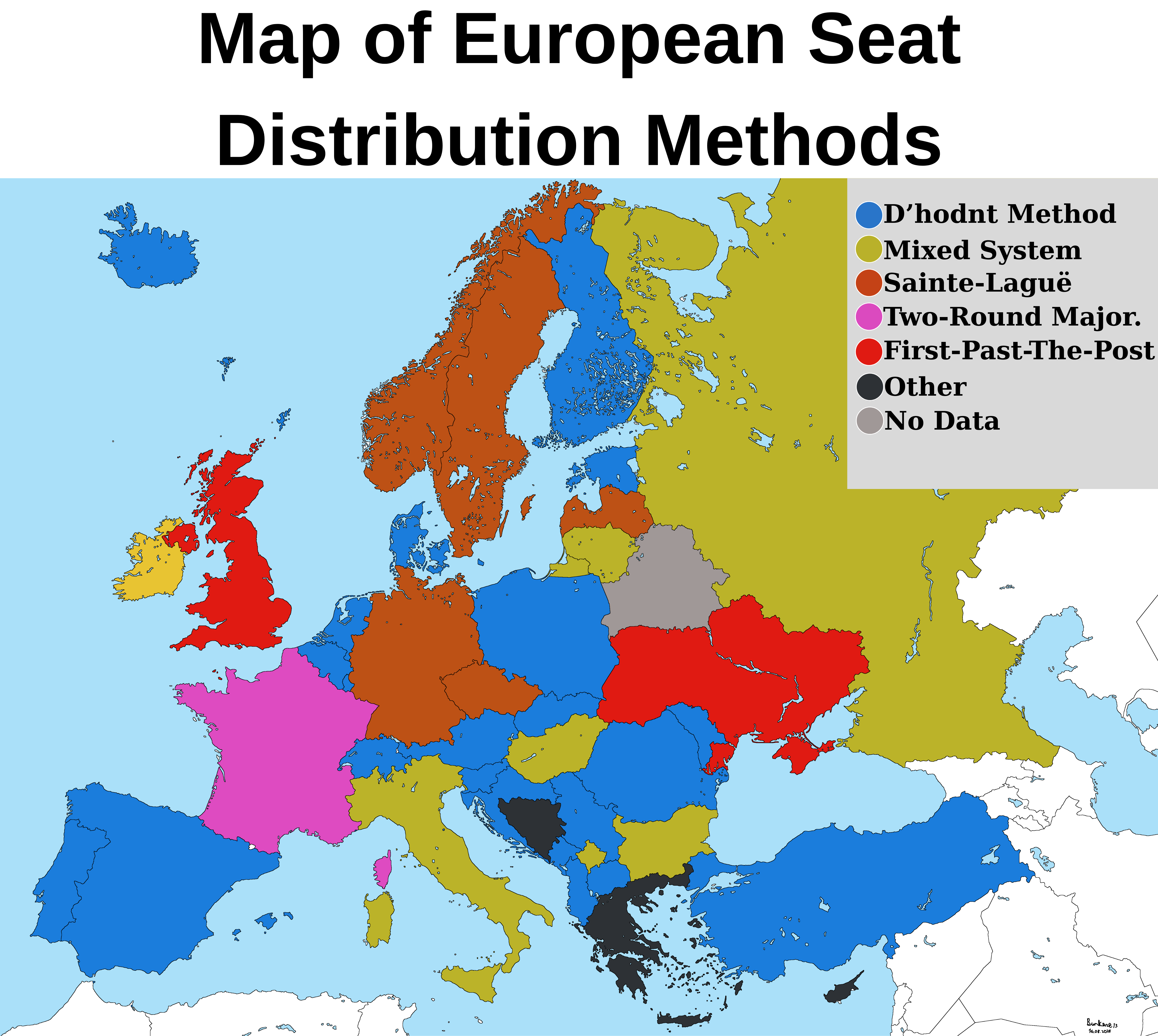Proportional Representation and Seat Allocation in Europe Map


David Chen
Data Visualization Specialist
David Chen is an expert in transforming complex geographic datasets into compelling visual narratives. He combines his background in computer science ...
Geographic Analysis
What This Map Shows
The "Proportional Representation and Seat Allocation in Europe" map provides a comprehensive visualization of how different electoral systems influence the distribution of parliamentary seats across various European countries. It highlights the methodologies employed in different nations, showcasing how they impact party representation in legislative bodies. Understanding these electoral systems is crucial for grasping the political landscape of Europe, as they shape not only party dynamics but also voter engagement and overall democratic health.
Deep Dive into Electoral Systems
At the heart of democratic representation lies the method by which votes translate into seats. The map emphasizes several key electoral systems employed across Europe that significantly affect proportional representation. Let’s delve into these systems:
1. **d’Hondt Method**: This method, widely used in countries like Spain and Portugal, favors larger parties. By dividing the total number of votes by a series of divisors (1, 2, 3…), smaller parties often find it challenging to gain representation. For instance, in a scenario where three parties compete, the d'Hondt system can disproportionately benefit the leading party, consolidating its power and potentially leading to a less diverse parliament.
2. **Sainte-Laguë Method**: In contrast, the Sainte-Laguë method offers a more equitable approach by employing different divisors (1, 3, 5…). Countries like Sweden and New Zealand utilize this system, which tends to yield a more balanced representation for smaller and medium-sized parties. This balance can invigorate the political landscape by allowing diverse viewpoints to enter the legislature, fostering a healthier democratic debate.
3. **Mixed Systems**: Some nations, such as Germany, adopt a mixed system where seats are filled through both majority voting in single-member districts and proportional representation. This hybrid approach aims to balance local interests with the need for proportionality, ensuring that various voices within society are heard while also maintaining strong local representation.
4. **Two-Round Majority Method**: Employed in countries like France, this method requires a candidate to secure over 50% of the votes in the first round to win. If no candidate achieves this, a second round is held with the top candidates. This system encourages strategic voting and can influence how parties campaign, focusing on building broader coalitions.
5. **First-Past-the-Post**: Commonly used in the UK and many other countries, this system awards victory to the candidate with the most votes in a district, regardless of whether they achieve an outright majority. This often leads to a winner-takes-all scenario, which may marginalize smaller parties and lead to disproportionate representation.
Regional Analysis
Looking closer at the map, we can observe distinct regional trends in seat allocation. For instance, in Northern Europe, countries like Finland and Denmark utilize the Sainte-Laguë method, resulting in parliaments that are more representative of the electorate's diverse opinions. This contrasts sharply with the UK, where the first-past-the-post system can lead to significant discrepancies between the percentage of votes received by a party and the number of seats it holds.
In Southern Europe, Portugal's use of the d’Hondt method has historically favored larger parties, often leading to single-party governments. Conversely, Spain's adoption of proportional representation allows for coalition governments, reflecting a broader spectrum of political ideologies.
Eastern European countries such as Poland and Hungary showcase a mix of these methods, with some adopting mixed systems to balance local representation with national party dynamics. However, this can also lead to contentious political environments, as seen in Hungary, where the electoral system has sparked debates regarding fairness and representation.
Significance and Impact
Understanding the electoral systems represented in this map is crucial for grasping the dynamics of European politics. The way seats are allocated directly influences the level of representation for various groups within society, affecting policy-making and governance. For instance, countries that employ proportional representation tend to have higher voter turnout, as citizens feel their votes matter more in a system that values every voice.
Interestingly, as Europe grapples with challenges such as populism and political polarization, the effectiveness of these electoral systems is under scrutiny. Are they facilitating democratic engagement or creating barriers? The trend towards mixed systems may suggest a shift towards greater inclusivity in representation, as nations experiment with new ways to engage their electorates.
In conclusion, the "Proportional Representation and Seat Allocation in Europe" map not only illustrates the mechanics of electoral systems but also serves as a lens through which we can analyze the broader implications for democracy in Europe. As we move forward, these systems will continue to shape the political landscape, influencing how citizens connect with their governments.
Visualization Details
- Published
- August 16, 2025
- Views
- 204
Comments
Loading comments...